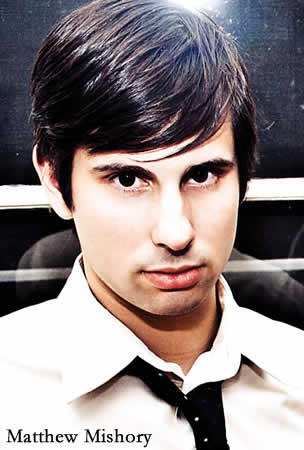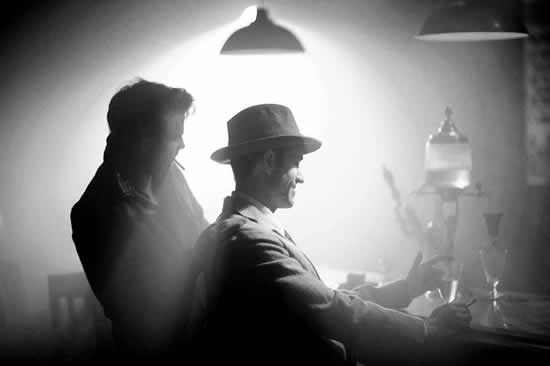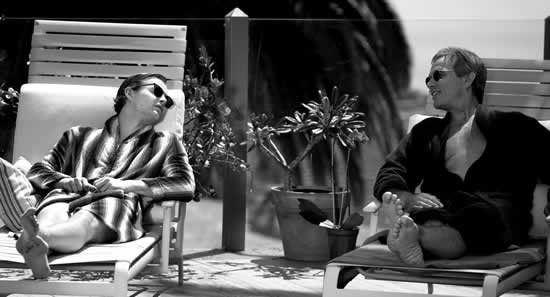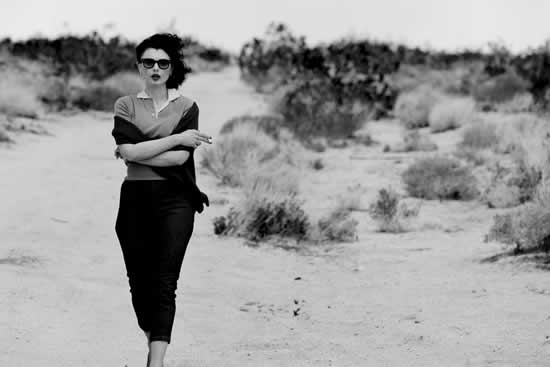 JOSHUA TREE, 1951, A PORTRAIT OF JAMES DEAN Deandirected by Matthew Mishory, is an intimate portrait of James Dean on the cusp of achieving notoriety as both a great actor and an American icon. Set primarily in the early 1950s and focusing on Dean’s experiences as an up-and-coming actor in Los Angeles, the film is a series of revealing and sometimes dreamlike vignettes that blend biographical and fictionalized elements to present a pivotal moment in a remarkable life.
JOSHUA TREE, 1951, A PORTRAIT OF JAMES DEAN Deandirected by Matthew Mishory, is an intimate portrait of James Dean on the cusp of achieving notoriety as both a great actor and an American icon. Set primarily in the early 1950s and focusing on Dean’s experiences as an up-and-coming actor in Los Angeles, the film is a series of revealing and sometimes dreamlike vignettes that blend biographical and fictionalized elements to present a pivotal moment in a remarkable life.
Bijan Tehrani: What inspired you to make this film?
Matthew Mishory: Making a film for me is always very personal. Conceptually, it was inspired by my childhood: the first feature film I remember seeing as a little boy of four or five years old was East of Eden. The performance of James Dean really stuck with me, these images haunted me and years later I decided to do this film and find the antecedents of his life and career.
BT: How did you go about writing the screenplay of the film?
MM: We started with history, with primary and secondary sources. We started with the biographies and continued with the autobiographies of his contemporaries and most interestingly, we spoke to the few surviving people of the era who knew the characters. The character of Roger was drawn specifically from conversations with people who knew him very well. We were actually fortunate that the actor who played him got to spend some time with a man who knew him from that era. So we started with history, and then we decided we’d have this symbolic or emotional space as well, which was the desert. The themes in the city are taken from historical contexts and in the portion of the desert, although some of the things the characters are saying were actually said in different places, we had the freedom to work in a more symbolic space.
BT: So how much is this based on the real life of James Dean?
MM: Actually, some of the parts viewers think are imagined are not and the ones that seem real are not… but more or less, the portions in the city are all taken from sources and the scenes in the desert are not. The idea of James Dean in the desert comes from a kernel of truth in an anecdote we found interesting: Dean was brought from New York for shooting a film and he was so pale from spending the winter in New York that he was sent to the desert to tan.
BT: The visual style of the film is very interesting. How did you come up with the style? I like the mood that you create by using mostly Black & White.
MM: I knew from the beginning the film had to be made in Black & White. It was a decision that came from my background in critical studies and film studies because I think this is a period in history we mostly relive through the movies, and specifically through Black & White films of the Golden Age of Hollywood. I wanted to use the language of that era, while updating it too. The film is in Black & White, it’s shot on film, it’s mostly 35mm: in that way it pays tributes to that era. We used vintage lenses and did some grand sweeping shots with a lot of filtering done in camera – so we used techniques of the era, but we also added some revisionist touches. A film of that era would be mostly shot on medium lenses; we have a lot of close-up work with Macro lenses and we used many modern camera techniques as well. The idea was to bridge the gap between a visual style that referenced that era and a visual style that referenced the revisionist element of the film.
 BT: What were the challenges for you of making this unique style? Most cinematographers today are not used to working in Black & White and it can be pretty challenging.
BT: What were the challenges for you of making this unique style? Most cinematographers today are not used to working in Black & White and it can be pretty challenging.
MM: My first student film was shot in Black & White and my cinematographer, who’s a very close collaborator – this is our third project together- had started his work in B&W. We both had studied film history and had a strong visual reference to that era but we didn’t look at films so much as still photography. The inspiration was more from photographers like Ansel Adams or Irving Penn, and studio still photographers of the 40s and 50s as well as paintings. We were interested in working with light in an interesting way for this film. The challenge is always time – we had only 15 days to shoot the film, not very much budget, and only so many takes.
BT: It can be very difficult to cast for historical characters. How did you go about casting?
MM: It’s true and it’s particularly difficult with a small budget. We didn’t have a full-time casting director, so my producer, who plays Roger in the movie, who had cast movies in the past, wore two hats and helped with casting. It differed by part: the role of Violet was entirely written for the actress: I had worked with her on a period piece and I felt she had a really interesting period look. The role of Roger was written for Edward who plays it. He really got us to do a great amount of research on him.  And Dan Glenn was one of the people who brought everyone together. James was really the part where we cast someone we didn’t know. We did a breakdown and had hundreds of submissions. When he walked into the room and did his audition, we knew we had our guy.
And Dan Glenn was one of the people who brought everyone together. James was really the part where we cast someone we didn’t know. We did a breakdown and had hundreds of submissions. When he walked into the room and did his audition, we knew we had our guy.
BT: What is your way of working with actors?
MM: My philosophy is very simple: cast the right actors in the first place. I think that’s 90% of directing actors. There’s only so much you can on the set when you have limited time so I think it’s about casting and preparation. I try to make myself very available to prepare with the actors before we start shooting because on an independent set there is not a lot of time for numerous takes. So it’s about preparation and when possible rehearsal.
BT: Did you need to make a lot of changes from the script to the editing room?
MM: I think you write the film three times: once when you write the script, once when you shoot and once when you edit. The more I make films, the more I realize that’s a healthy part of the process, not a process of fixing mistakes but it’s how you find the movie. This film changed a lot in the editing. The original draft of the script dealt more with Dean’s evolving philosophy of acting and his concept of acting as the summation of all the arts; it dealt more as Dean as someone who soaked in art and culture from other people and synthesized it into something new. As we shot the film, we realized that the strength of the film and the core of the story was more about the relationships and how Dean had a habit of blowing through people’s lives and leaving an indelible impression. We realized what we had created was a portrait of someone who lived a very short but very impactful life; ultimately that was something very powerful to convey through film, and we made it central in the editing.
BT: Any future projects you are working on?
MM: Yes, a few. I have a documentary that has been shot and is in post-production right now. I have a feature project for a young actor who’s the grandson of James Mason from Lolita, and his father, Morgan Mason who produced Sex, Lies & Videotape, will be producing the film. It’s a political thriller, very different for me, structurally and aesthetically , but also a lot of fun to make.
BT: Is Joshua Tree being distributed?
MM: It’s played in about 55 festivals and it’s had a few short theatrical runs in different cities in the US; we are about to do in Berlin and the UK,, and then will be available on VOD and DVD in North America, the UK, Ireland, France, Germany, Switzerland, Austria, and other German-speaking countries in May and June.

